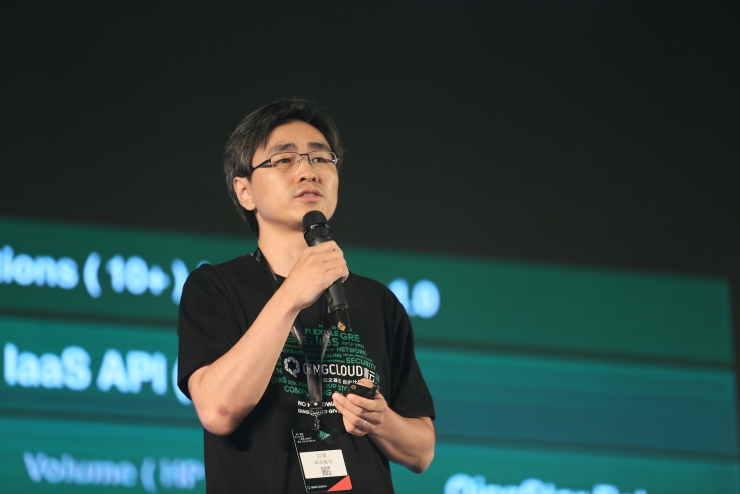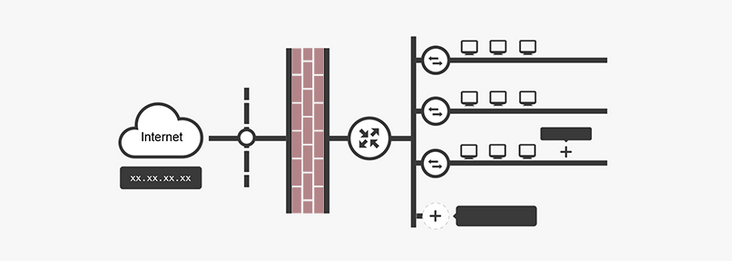Compared to a year ago, the field of cloud computing has changed a lot: Everyone has firmly believed that cloud computing has become the foundation of the company. One clear proof is that many companies have achieved 100% IT cloudization.
This makes many cloud computing service providers feel the wind and the wonderful.
In the giant cloud computing market such as Alibaba Tencent, Qingyun is like a nail, and his circle of “friends†has circled a series of “dead loyaltiesâ€. This company, which once created the largest amount of financing in the cloud computing field, was called by CTO Ganquan to survive in the “crack,†and it turned out that they lived well. If there is any secret about their “living methodâ€, it is probably to dare to keep up with their opponents technically.

Qingyun QingCloud CTO Ganquan
At the recent Qingyun Insight conference, this unique and unique basic cloud computing service provider demonstrated its "muscle." Their technological innovation, to a certain extent, also represents the development trend of cloud computing. Let’s take a look at these technologies that have already been launched and will soon be available:
SDN2.0 : Qingyun's “mesh†software-defined network structure proposed in 2015 is also one of the most proud of Qingyun.
SDS 2.0 : A virtual storage technology that supports both virtualized and non-virtualized drives.
NAS2.0+SAN2.0 : A shared storage technology that allows the storage space to exceed the size of the physical hard disk.
QingStor 1.0 : A fine-grained object storage system.
Container Instance : A technical architecture that is compatible with both virtual machines and containers.
PaaS SDK&Resource Management : The architecture is based on the IaaS layer and further abstracts the technical architecture of the IaaS layer. Make it easier for users to build PaaS layers.
AppCenter 2.0 : Provides tools and services to help developers easily build tools for clustered applications.
Looking at these technical terms alone, it may not be easy to understand the meaning. However, in Qingyun's eyes, every technical point is trying to solve a user's pain points. We may wish to pry into the technical direction of cloud computing based on this:
1. Mesh structure
How to define the network structure is somewhat similar to how an enterprise constructs a personnel structure. Is layer management, or flat collaboration, which will affect the bottom efficiency of a company. The choice of Qingyun is to define a mesh topology instead of the tree structure that was commonly used before. This new structure can reduce the pressure on the root node structurally. In 2015, the mesh structure has attracted much attention from the cloud computing industry, because this model can theoretically allow network nodes to be infinitely extended without being affected by the logical hierarchy.

Build a private cloud environment with SDN
2, physical hard disk storage access
Qingyun CTO Gan Quan said that the user's requirements for storage are getting higher and higher, but the previous virtual storage technology has a bottleneck, that is, the loss of virtual hard disk is relatively serious. So in many technological improvements, he is the most emphasized point that can support both virtualized and non-virtualized hard drives. And in the future, it is very likely that all cloud storage devices will be flash-enabled, and this advanced storage medium will require the support of next-generation storage technologies.
3, a single hard drive capacity breaks through the sky
In Qingyun's presentation, NAS 2.0 supports PB-level storage, while SAN 2.0 supports 100TB of single-disk capacity. Although theoretically users can adopt (loomingly more advanced) distributed storage technologies, the reality is a bit cruel. Many softwares do not support distributed storage, and the engineering power is not enough to solve these problems. This kind of technology is also an exploration of the direction of cloud computing development.

Performance vs. Real Disk Performance Comparison
4, virtual machines and containers no longer fall in love with each other
In the industry, discussions on virtual hosts and containers have continued for several years. There has even been a radical view recently that virtual hosts will be replaced by containers. However, objectively, both have distinct advantages and disadvantages, which can be said to be symmetrical and complementary.
The virtual host can provide complete hardware simulation and can run any software without worrying about isolation and security. However, the disadvantage is the large loss of performance. According to the introduction of Oasis, the loss of the performance of the virtual host is ranked as follows: CPU <memory <network <hard disk. In other words, the hard disk is the most lossy and most vulnerable part of the entire link. The speed of the mechanical hard disk itself will make this effect worse
The container is just the opposite. It is extremely dependent on the physical machine's kernel and hardware, which makes it very poor in isolation and security. However, the loss of performance of the container is almost zero.
The launch of Qingyun's network and scheduling system that is compatible with both virtual machines and containers is also seen as one of the technological directions for cloud computing in the future.
5, enterprise IT consumers
In the long history, cloud computing service providers have been seeking their own "infrastructure". However, after this role was recognized by the industry, there emerged a large group: enterprise-level IT consumers. They are no longer satisfied with the fact that cloud vendors only provide basic resources, but they hope to gain more PaaS-level productivity tools. Albatron's so-called AppCenter 2.0 is trying to solve this problem. This is the so-called "resource-centered" to "application-centered."
Looking at the self-recognition of Qingyun, what they value most is not the breakthrough of technology, but the re-understanding of their own positioning. The rise of a sense of industrial service is a sign that it is beginning to mature. From the actions of giants Ali, Tencent and Baidu this year, they also devoted themselves to customized services and friendly development. This is a good thing for all participants in cloud computing.
